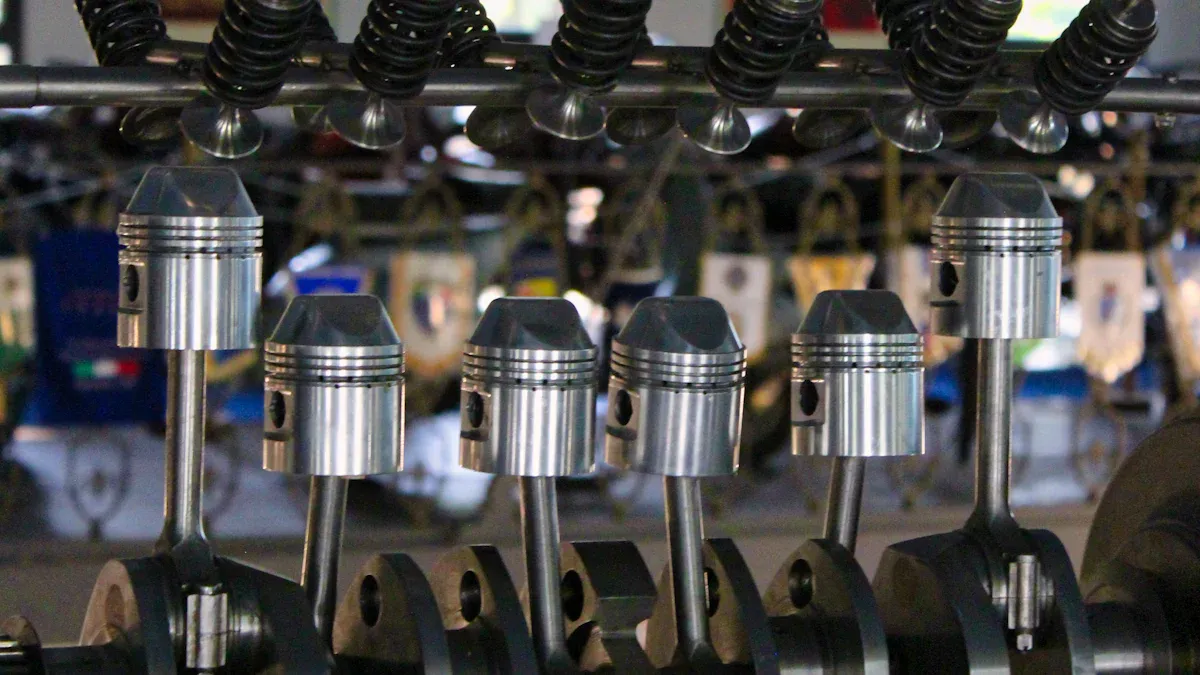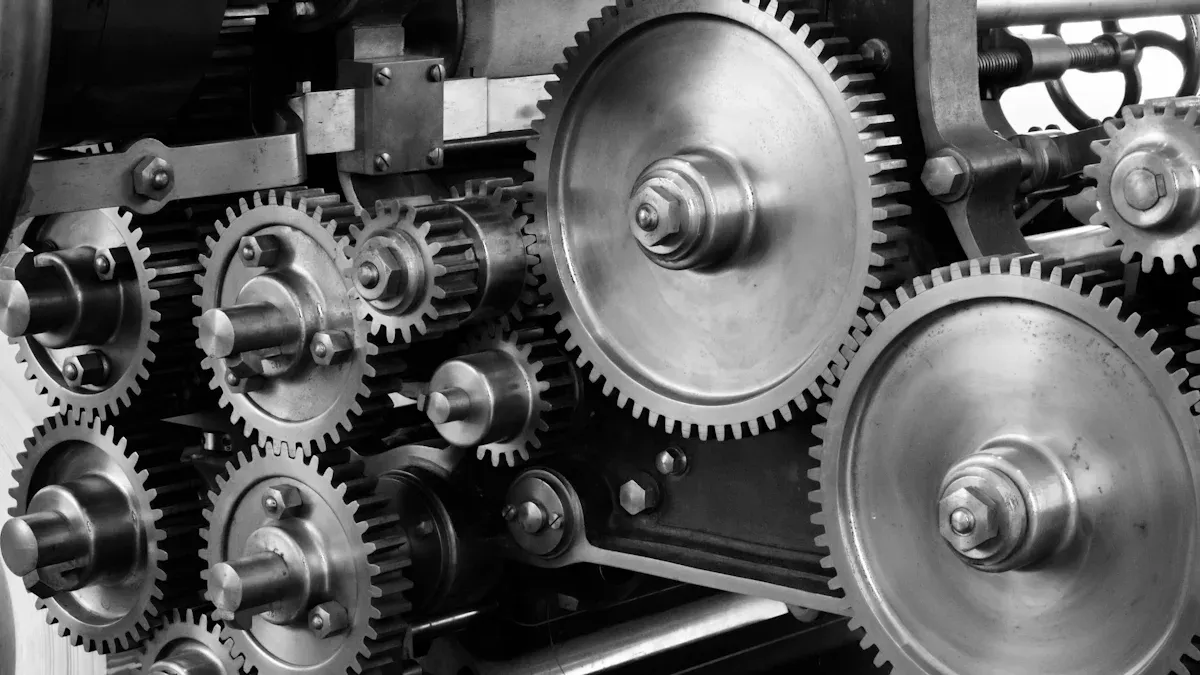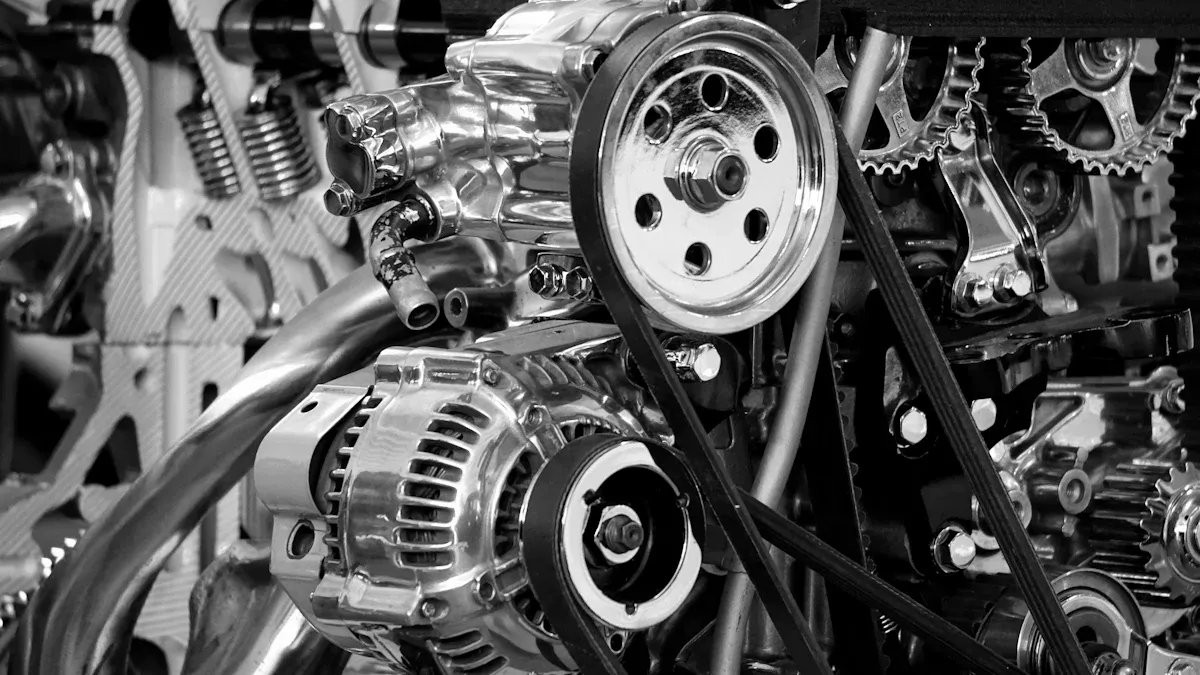High-Temp Piston Parallel Unit Explained Simply

Think of a machine part that works well in high heat. That’s what a high-temp piston parallel unit is. This tool uses pistons lined up side by side to move energy in hot conditions.
Its job is to stay strong and work where normal parts break. It is built to be reliable and accurate in industries needing heat, like factories or power plants. Without it, many machines would get too hot or stop working well.
Key Takeaways
High-temp piston units work well in very hot places. They keep machines running when others stop working.
Pistons are set up side by side to share the work. This stops one piston from doing too much and wearing out.
Strong metals like titanium make these units last longer. This means fewer repairs and saves money over time.
Special liquids help move energy and keep the unit working. These fluids work even when it’s really hot.
These units are used in factories, power plants, and cars. They help machines work well in hard conditions.
Components of a High-Temp Piston Parallel Unit

Pistons and their function
Pistons are the main part of this unit. They are round pieces that move back and forth in a tube. This movement creates power to transfer energy. Think of pistons as helpers that turn energy into motion.
In hot places, pistons must handle heat without breaking. Their design keeps them working smoothly, even in tough conditions. Without pistons, the unit couldn’t do its job of moving energy.
Parallel arrangement and its role
The parallel setup means pistons work side by side. This makes the unit more efficient by sharing the work evenly. Imagine friends lifting something heavy together. Sharing the load makes it easier and quicker.
This setup also keeps the unit steady. If one piston has trouble, others keep working. This way, the unit doesn’t stop completely. The parallel design helps it work well in tough situations.
High-temperature materials and their significance
Special materials make this unit strong in high heat. These materials resist damage from heat, wear, and rust. For example, metals like titanium or coated alloys are used. They help the unit stay strong and work in extreme heat.
Using these materials lowers the chance of breaking. Strong parts last longer and need less fixing. This is important where stopping work costs money. These materials are key to the unit’s strength and reliability.
How a High-Temp Piston Parallel Unit Works
Hydraulic fluid and energy transmission
Hydraulic fluid is very important for this unit. It moves energy between pistons and other parts. When pistons move, they press on the fluid. This sends energy to where it’s needed. Think of it as the system’s lifeblood, keeping energy flowing smoothly.
The type of hydraulic fluid matters in high heat. Special fluids can handle extreme temperatures without breaking down. This keeps the unit working well and efficiently. Using the right fluid also reduces damage and improves performance.
Piston movement and parallel operation
Pistons move back and forth in a controlled way. This motion creates the force to transfer energy. The pistons work side by side, sharing the load evenly. This design stops any one piston from being overworked.
Think of rowers in a boat. They all row together to move faster. The pistons also work together to transfer energy smoothly. This teamwork reduces energy loss and keeps the system running well.
Heat management and durability features
Handling heat is key to making the unit last longer. The unit uses strong materials like titanium alloys. These materials resist heat and don’t crack or bend easily. They stay strong even in very hot conditions.
Cooling systems also help control heat. They remove extra heat to keep parts safe. This stops breakdowns and helps the unit last longer.
Here’s a table showing how well the unit works:
Metric | What It Means |
|---|---|
ηv | How well it moves fluid |
ηhm | How well it uses energy |
ηt |
These numbers show how good the unit is at saving energy and staying reliable. High efficiency means less waste and more power where it’s needed.
Benefits of High-Temp Piston Parallel Units
Works well in high heat
This unit works great in very hot places. Its design helps it handle heat without losing power. The pistons and materials work together to keep energy moving smoothly. Even in tough conditions, it keeps machines running when others might stop.
The DANAE heat pump uses natural refrigerant R290. It has Frascold’s ATEX-HT compressors for high performance and low impact. It also has efficient heat exchangers and inverter controls. These features improve its COP and save more energy than regular systems.
This shows how smart designs, like in these units, save energy and work better.
Strong and lasts a long time
You need tools that last in hot places. This unit uses strong materials like titanium alloys to avoid damage. These materials stop heat from causing problems and keep the unit working well. The pistons work side by side, so if one breaks, the others keep going.
This makes the unit need fewer repairs or replacements. It saves you money and keeps your machines running smoothly.
Saves energy and works better
Saving energy is important for any machine. This unit spreads the work evenly across its pistons. This balance stops one piston from working too hard and improves how it runs.
Special hydraulic fluids also help energy move better. These fluids stay strong in high heat, keeping energy flowing smoothly. This gives you a system that uses less energy but delivers more power.
Applications of High-Temp Piston Parallel Units

Industrial machinery and manufacturing
High-temp piston parallel units are key in industrial machines. They help machines work well in places with extreme heat. For example, in steel factories, furnaces get very hot. These units keep energy moving efficiently in such heat.
Factories use them for hydraulic presses and molding machines. They handle heat and keep working without breaking. This reduces delays and keeps production running smoothly. Without these units, many factory processes would slow or stop.
Power generation systems
Power plants need these units to work efficiently. In thermal plants, heat is a byproduct of making energy. These units move energy even in very hot conditions. They help turbines and generators turn heat into power.
Tip: Adding these units to power plants saves energy and cuts waste. This helps meet energy needs in a greener way.
Nuclear plants also use these units. They handle the high heat from nuclear reactions. This keeps the plant safe and working reliably.
Aerospace and automotive industries
These units are vital in planes and cars for safety. Aircraft engines create a lot of heat when running. These units manage energy so engines don’t overheat and stay smooth.
In cars, especially race cars, they improve brakes and steering. These cars face tough conditions, and these units handle the heat. Their strength and efficiency make them a top choice for engineers building advanced vehicles.
A high-temp piston parallel unit moves energy in very hot places. Its pistons, side-by-side setup, and strong materials keep it working well. It uses hydraulic fluid, shares work evenly, and handles heat smartly. These units save power, last longer, and work dependably in tough conditions. Found in factories, power plants, and vehicles, they help machines stay efficient and run smoothly in high heat.
FAQ
What makes a high-temp piston parallel unit special?
This unit uses strong materials to handle very high heat. Regular systems might break, but this one stays tough. Its side-by-side pistons move energy smoothly, even in hard conditions.
Can a high-temp piston parallel unit work in cold places?
Yes, it can. These units are made for heat but work in cold too. Their strong build and smart design make them useful in many temperatures. They perform well in different environments.
How do you take care of a high-temp piston parallel unit?
Check the hydraulic fluid often to ensure it works for heat. Look at the pistons and cooling parts for damage or wear. Regular care keeps the unit working well and lasting longer.
Tip: Always follow the maker’s instructions for the best care.
Are these units costly to set up?
They cost more at first than normal systems. But they save money later by lasting longer and using less energy. They need fewer repairs, making them a smart choice for hot places.
Which industries use these units the most?
Factories, power plants, planes, and cars use them a lot. These units handle heat well, keeping machines running smoothly. They are needed where regular systems might stop working.
See Also
Exploring Benefits of Transcritical CO2 Refrigeration Systems
A Comprehensive Look at Air Cooled Condensing Systems
The Superiority of CO2 Cascade Refrigeration Units Today
Essential Guide for Quick Freezing Compressors in Food Industry

